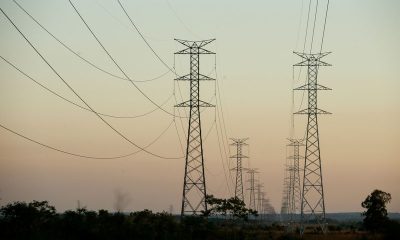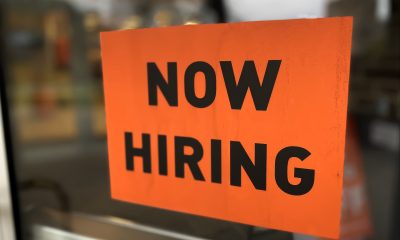Personal Finance
How to Buy a House With Bad Credit

Regardless of what you may have heard, getting a mortgage with bad credit is possible. There are other factors besides your credit score that can help tip the scales in your favor.
Follow the steps below and learn how to increase your chances of qualifying for the best mortgage possible and getting a home of your own.
Take the first step toward better credit today
Lexington Law leverages its three decades of industry experience to work on your behalf. Don’t let bad credit weigh you down. Click below and get started now.
View Plans
What is a bad credit score?
One factor that lenders will rely on to evaluate your mortgage application is your credit score. This is a three-digit number ranging from 300 to 850 that is meant to represent how likely you are to pay your bills. In general, a credit score below 620 is considered to be bad.
Mortgage lenders will rely on one of two credit scoring systems to find out your score — FICO (Fair Isaac Corporation) or VantageScore 3.0. Each system establishes a credit score range and assigns ‘grades’ from Very Poor to Exceptional/Excellent. Where you rate on the scale will determine how good/bad your credit is.
|
FICO Score Ranges |
VantageScore 3.0 Ranges |
|
Very Poor – 300 to 579 |
Very Poor – 300 to 499 |
|
Fair – 580 to 669 |
Poor – 500 to 600 |
|
Good – 670 to 739 |
Fair – 601 to 660 |
|
Very Good – 740 to 799 |
Good – 661 to 780 |
|
Exceptional – 800 to 850 |
Excellent – 781 to 850 |
Your credit score is primarily determined by five factors: your payment history, how much money you owe compared to your available credit, the age of your credit history, your credit mix and how many credit accounts you have.
Your credit scores can change over time based on your financial position. For instance, throughout the pandemic, credit scores have increased thanks to lockdown measures that led to fewer spending opportunities and COVID-19 relief payments that kept many people from missing out on debt payments.
The average FICO score was 716 as of April 2021, eight points higher than in April 2020. The good news is that consumers with FICO scores in the Fair range saw the largest improvement, increasing 20 points from an average of 581 to 601, bringing more potential homebuyers into the minimum range required by many lenders.
Buying a house with bad credit
Not having a high score doesn’t mean homeownership is out of reach. There are bad credit mortgage options and lenders that will work with borrowers in the Very Poor to Fair/Poor credit score ranges. The key is to do your homework, find the right lender and maximize your chances of approval.
The steps below can help you get started.
Steps to buying a house with bad credit
1. Check your credit report and credit score
Your first step toward getting a mortgage with bad credit is to find out exactly what information is contained in your credit report (your credit score is based on this report). You can do this by requesting a copy of your credit report from one of the three major credit bureaus — Experian, Transunion or Equifax.
Normally you can get one free credit report per year from each one of the credit bureaus, which you can request through annualcreditreport.com However, thanks to laws enacted in response to the pandemic, you’re now able to request a free weekly report through 2023.
Learning to read your credit report is important because you’ll be able to verify that all the information included is correct. If you do spot errors, you can remove items from your credit report, which can provide a boost to your score.
Your next step is to find out what your credit score is. You can buy this information from any of the credit reporting bureaus, but you can also get it for free from sites such as Credit Karma. Some credit card and bank loan statements will also include the information at no cost.
2. Find the types of mortgages you can get with bad credit
There are different types of mortgages, with different minimum score requirements. Some are more flexible than others, but all will offer financing options for borrowers with less than stellar credit.
Some loan options you could consider include:
FHA loans
The Federal Housing Administration isn’t a mortgage lender but does provide insurance on loans offered by approved FHA lenders. FHA loans are designed for borrowers with lower credit scores and down payments who may not be able to qualify for a conventional loan.
For example, borrowers with credit scores as low as 580 and who can put 3.5% down can qualify for an FHA loan. Borrowers with credit scores as low as 500 can also qualify but need to put at least 10% as a down payment.
Other requirements to qualify for an FHA mortgage include having a steady income, proof of employment and having a debt-to-income ratio of 43% or less (that’s how much of your monthly income is going toward debt), although some lenders will accept a DTI as high as 50%. You can use a DTI calculator to determine what your ratio is.
VA loans
VA loans are mortgages provided by mortgage lenders but insured by the Department of Veterans Affairs. This type of loan is available to active duty and retired military personnel, veterans and surviving spouses of eligible service members.
The VA doesn’t establish minimum credit score requirements. These are instead set by the lenders. Some lenders will work with scores as low as 580, while others may require a minimum score of 660. Always ask lenders about their score requirements before applying for a mortgage. Another advantage is that VA loans have no down payment requirements.
There are service time and eligibility requirements in order to qualify for a VA loan, but if you meet those requirements, this type of loan could be a solution to obtaining a bad credit mortgage.
USDA loans
There are two types of home purchasing programs sponsored by the U.S. Department of Agriculture. These loan programs are specifically designed for low to middle-income buyers interested in purchasing a home in suburban or rural areas around the country.
The first program is a USDA-backed loan provided by a private mortgage lender. The minimum recommended credit score for this type of loan is 640. This score allows you to go through a streamlined automatic approval process.
You can qualify for a USDA-backed mortgage with a score as low as 600, but you’ll need to go through a manual underwriting process that will require a more detailed look at your finances.
Another potential option is a direct loan funded by the USDA. This loan type is designed for very low-income borrowers. There are no set credit score requirements, but you will need to prove you can afford the monthly payments and are willing to make them.
Both types of loans have income requirements and property criteria that need to be met. Neither loan requires a down payment.
Conventional loans
Conventional mortgages are loans that aren’t part of a government lending program. They are offered by traditional mortgage lenders like banks, as well credit unions, private mortgage lenders and non-bank lenders that often operate primarily online. There are two types of conventional loans — conforming and non-conforming.
Conforming loans are those that are eligible for purchase by Fannie Mae and Freddie Mac, which are government-backed. In 2022, the conforming loan limit was set at $647,200, although some more expensive real estate markets have a higher maximum of about $970,800. These limits are established by the Federal Housing Finance Agency and the mortgage loans must also follow other underwriting guidelines set by Fannie Mae and Freddie Mac.
Typically, the minimum credit score requirement for conforming loans is 620, although some lenders require a higher score. While a 20% down payment is needed to avoid private mortgage insurance (PSI), some lenders will accept as low as 3%. Last year, the average first-time homebuyer put 7% down.
Non-conforming loans, on the other hand, are generally for loan amounts that exceed the limits set for conforming loans. Large non-conforming loans are also known as jumbo loans and usually are more difficult to qualify for, often requiring a higher credit score and down payment than a conforming loan.
Sub-prime mortgages — loans offered to borrowers with low credit scores at interest rates higher than the prime rate — are another example of a non-conforming loan, but have not been very common since the housing crisis in 2008.
3. Save for a larger down payment
While you may not have great credit, you may still be able to get a mortgage if you have enough money for a sizable down payment.
Many lenders will see borrowers who put down a large down payment on a home as less likely to default on the mortgage since they have more equity from the start. While you can get a conventional loan with as little as 3% down, lenders may be more willing to approve a mortgage if you can comfortably afford a higher percentage.
Building up your savings can improve your chances in other ways as well. When you apply for a mortgage, lenders will go through your bank statements to check that you’re not using all your money to buy a home. Having enough money saved in the bank means that you can not only afford the down payment but can also afford to cover unexpected expenses that may pop up, such as home maintenance or repairs without relying on more debt. Many lenders look for enough savings to cover at least six months of mortgage payments.
4. Pay down debt
One of the most effective steps you can take to improve your chances of getting a mortgage is to reduce your debt. If you have balances on credit cards try to pay them off if possible, or at least lower the outstanding balance and refrain from making new charges on the account. This will help reduce your DTI and increase your score.
If you have student loans, personal loans or car payments, make sure to pay them on time and to not skip a payment. Part of what makes up your credit score is payment history. Demonstrating that you have the ability to pay your loans on time sends a positive signal to a lender that you are responsible with your debts.
5. Don’t close or get new credit accounts
Closing an existing credit card account can affect your credit score in a couple of different ways. The first is by reducing your available credit limit, which can affect your credit utilization ratio, one of the components that make up your score. Ideally your utilization ratio should not exceed 30%.
Generally speaking, the lower the ratio, the better. A credit utilization ratio over 30% shows a lender that you may be relying on debt to pay your living expenses and can indicate you are a higher lending risk. If you reduce your available credit, your utilization ratio will go up. The second effect, which is more relevant if the account you’re closing is an older one, is to reduce the average age of your credit accounts. Longer credit histories tend to boost your score.
Opening a new credit account can also affect your chances of getting approved for a mortgage. When you apply for a new credit card or loan, the lender performs a hard credit check, which can lower your credit score by a few points. It can also signal a lender that you are relying on credit to manage your expenses.
6. Look for a co-signer
Adding a trusted family member or friend with a better credit score as a mortgage co-signer can help increase your chances of approval and get a better loan rate. This may also help you qualify for a larger loan amount.
When looking for a mortgage lender, ask whether a co-borrower is accepted in the type of home loan you’re applying for. You should also make sure your co-signer has a good credit and is able to undertake the debt.
However, adding a co-signer is not a decision you should take lightly. Keep in mind that the person you choose will also be responsible for repaying your loan if for some reason you were unable to do so.
7.Consider other credit improvement options
Some credit reporting agencies will consider alternative information, such as payments for utilities and streaming services, and include them in your credit report. As long as you’ve paid these items on time and haven’t skipped a payment, they can provide a boost to your score.
You can also consider consolidating your debts into one single loan, which can help reduce your monthly payments and save on interest. If you rent your home and have been consistently making your payments, you can have that information included in your report as well. Demonstrating the ability and willingness to pay your monthly expenses on time will improve your score as well.
If you have bad credit and need help sprucing it up, consider using a credit repair company. For a fee, these companies will go through your credit report, identify errors that could be pulling your score down, and take action to have them removed. Note, however, that credit repair companies cannot remove negative information that is accurate from your report.
8. Always shop around
Just like shopping around can lead to savings on a car, comparing mortgage lenders can pay off in the form of a lower interest rate, lower fees or lower monthly payments.
Get a pre-qualification from at least three different banks and compare what each offers. Freddie Mac has found that you can save $1,500 over the life of a mortgage if you get one additional rate quote. If you get five additional quotes, you can save up to $3,000.
Different lenders will have different costs associated with originating and underwriting a mortgage. This results in some lenders being able to offer lower interest rates than others. By shopping around with different lenders, you can compare mortgage rates, loan terms, fees and closing costs.
You’ll also be able to compare how long it takes to close on the loan and get a feel for how responsive a lender will be if you need assistance.
Don’t limit your search to traditional banks either. Online lenders and credit unions, for example, often have lower expenses and can pass on those savings to borrowers. Make sure you look at a variety of different lenders to find the best rate and terms for your home loan needs.
Help buying a house with a bad credit
The Department of Housing and Urban Development (HUD) and other agencies offer multiple assistance programs that can help you pay for a home. Depending on your financial situation and whether you’re a first-time homebuyer, you may qualify for one of these programs.
Homeownership vouchers
The Housing Choice Voucher (HCV) homeownership program can be an option if you’re a public housing resident or a first-time homebuyer with low income. The HCV program provides subsidies you can use when buying a house. These can be in the form of monthly assistance to help you meet homeownership expenses or as a downpayment grant option.
To qualify for the HCV program you must be a first-time buyer and meet specific income and employment requirements. In addition, you have to attend and satisfactorily complete a pre-assistance homeownership and a housing counseling course.
The HCV homeownership program is administered by the Public Housing Agency (PHA) in most states. However, it may not be available in all jurisdictions. To check whether or not the HCV program is available in your state, you should contact your local PHA.
Down payment assistance programs
Down payment assistance programs can be an option if you want to buy a home but haven’t saved enough. DPA’s are usually available through state and local governments as well as some charitable organizations and mortgage lenders. They are designed to help low to moderate income buyers who otherwise may not be able to become homeowners.
Most of these programs will be available only to first-time homebuyers planning on using the home as a primary residence — investment or rental property won’t qualify. Each program will have its own definition of a first-time buyer, but many define the term as meaning someone who hasn’t owned a home in the past three years. There will also be different income and credit requirements.
There are different types of assistance you may qualify for:
Grants
Grant money is considered a gift and doesn’t have to be repaid.
Second mortgages
Some DPA’s offer additional loans at 0% or a very low interest rate. You can use the funds from this second mortgage as a down payment. However, you will have to make a monthly payment on this loan as well as on your primary mortgage.
Forgivable loans
This is also a second mortgage but you don’t have to pay it back if you live in the home for a predetermined number of years. Most loans will require you to stay at least five years in the home to have the debt forgiven. If you move, sell or refinance before the forgivable period ends, you will have to repay all or part of the loan. Forgivable loans are usually given at 0% interest.
Deferred loans
Another type of second mortgage at 0% interest, the debt of a deferred loan isn’t forgivable and has to be repaid. You are deferring the payments on the loan until you move, sell, refinance or pay down your primary mortgage.
Matched savings programs
Also known as individual development accounts, matched savings programs are savings accounts where you deposit money with a bank, government agency or community organization that sponsors IDAs. The organization where you deposit the money will then match your deposit amount, allowing you to save for a down payment faster.
There are over 2,000 different DPAs available throughout the country. Check with your local housing authority, government or public assistance organizations to find the options that are available to you.
How to Buy a House with Bad Credit FAQ
What credit score do you need to buy a house?
The minimum credit score needed to qualify for a mortgage will depend on the type of loan you apply for and the lender. The current minimum score for FHA loans is 500, while the minimum for VA loans is 580. Conventional loans will require a minimum of 620 and USDA lenders recommend a minimum score of 640. The higher your score, the better interest rate you will qualify for.
Can you buy a house with bad credit?
Yes, you can buy a house even if your credit is bad. FHA loans, for example, will accept credit scores as low as 500. However, you will likely qualify for a higher interest rate than if you had a higher credit score. To improve your chances of getting approved it helps if you have enough cash saved for a down payment, a stable income and a debt-to-income ratio of 36% or less.
How to get a home loan with bad credit?
Your first steps are to check your credit report and to find out what your credit score is. There are many lenders who work with borrowers with poor credit, so shop around to see which one offers the best rate and terms. If possible, improve your chances of qualifying for a home loan by building up your cash reserves and decreasing your debt.
Can you buy a house after a bankruptcy?
While possible, you may have to wait two to four years after declaring bankruptcy. In most cases, it’ll depend on the type of bankruptcy you filed, the cause and what type of loan you’re applying for. In the case of a Chapter 13 bankruptcy, you may be able to qualify for a mortgage immediately after discharge. Yet, if your credit score is below 620, consider improving your credit before you start applying.
Which credit score is used when buying a house?
Mortgage lenders may pull up your credit report from all three credit bureaus and look at the FICO Score 2 (Experian), 4 (Equifax) or 5 (TransUnion). However, most lenders will typically use just one or the median score to make the final decision.
Summary of How to buy a house with bad credit
Getting approved for a mortgage when you have bad credit is hard, but can be done as long as you have a credit score of at least 500. FHA loans are a strong option for people with bad credit because of their lower credit and down payment requirements.
While you may qualify for a mortgage despite having bad credit, you won’t qualify for the lowest interest rates on the market. Consider boosting your credit by paying down debt, building up your savings and decreasing your credit utilization ratio. The better your credit score, the lower the interest rate and monthly payments you’ll be able to qualify for.
© Copyright 2023 Money Group, LLC. All Rights Reserved.
This article originally appeared on Money.com and may contain affiliate links for which Money receives compensation. Opinions expressed in this article are the author’s alone, not those of a third-party entity, and have not been reviewed, approved, or otherwise endorsed. Offers may be subject to change without notice. For more information, read Money’s full disclaimer.
Read the full article here

-

 Make Money6 days ago
Make Money6 days agoHow to Create and Sell Digital Products Online (Make Extra Money)
-

 Investing6 days ago
Investing6 days agoIs Apple Releasing an ‘Ultra-Thin’ iPhone 17 Air? New Report
-

 Side Hustles7 days ago
Side Hustles7 days agoCreate Your Wealthy, Purposeful Life: Business Expert’s Tips
-

 Investing6 days ago
Investing6 days agoUS data center electricity and water use to increase significantly by 2028: report By Investing.com
-

 Investing5 days ago
Investing5 days agoMoldova breakaway region to face new power cuts on Saturday, officials say By Reuters
-

 Investing5 days ago
Investing5 days agoReebok Co-Founder Backs Syntilay’s New AI, 3D-Printed Shoe
-

 Side Hustles5 days ago
Side Hustles5 days agoHow to Survive High-Demand Seasons Without Losing Customers
-

 Side Hustles7 days ago
Side Hustles7 days agoMinimum Wage Is Increasing In These 21 States This Year


















